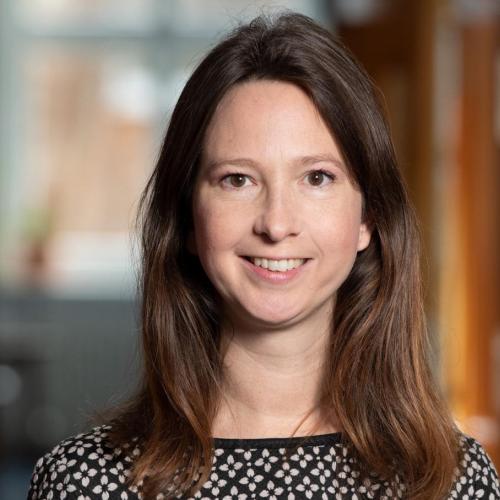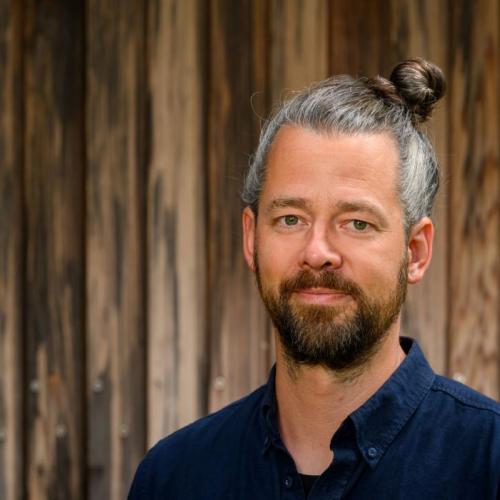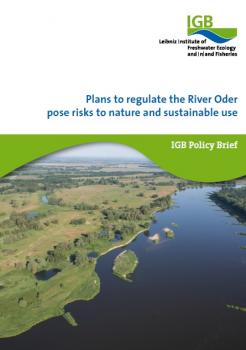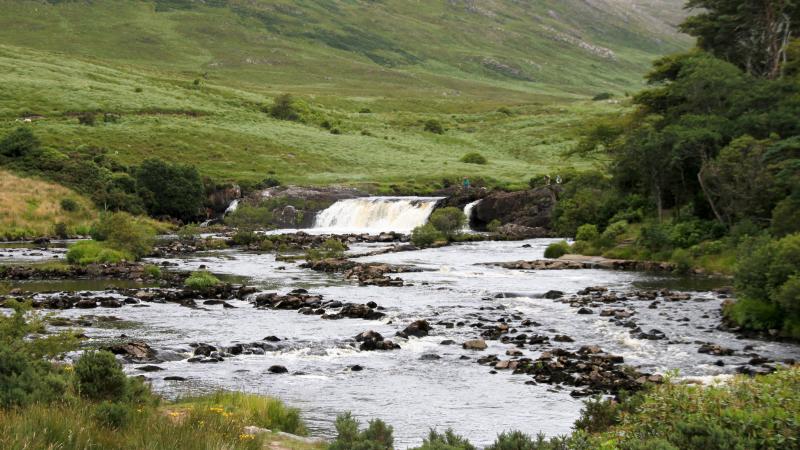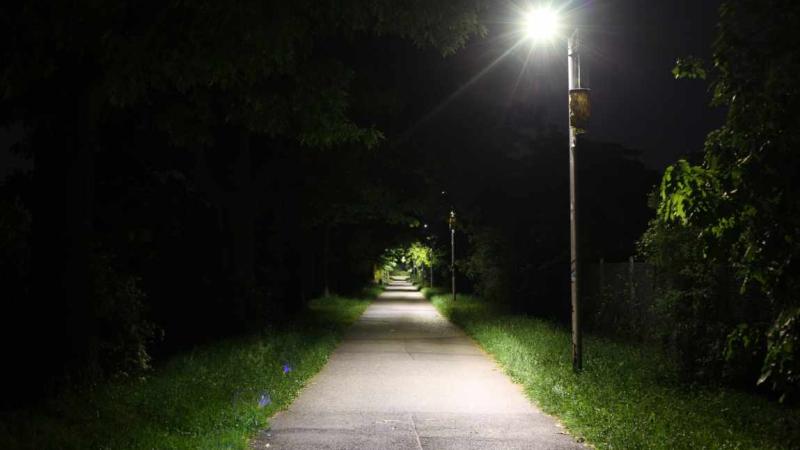Photo: Luc De Meester/IGB
+++
An update from 19 August 2022: Algae toxin detected in Oder water >
An update from 20 August 2022: Satellite data confirm massive algal bloom >
An update from 30 August 2022: Uncertain future for the sturgeon reintroduction programme >
+++
“This algae species is usually only found in brackish water and depends on high levels of salinity, which do not exist naturally in the stretch of the Oder hit by the disaster. For the past two weeks, however, unnaturally high loads of salt have been measured at the official gauging station of the State Office for the Environment in Frankfurt an der Oder; these must have originated upstream. The mass growth of these algae also resulted in significantly elevated levels of oxygen, pH and chlorophyll being measured. The upper part of the Oder and its tributaries contain numerous barrages that enable very little water exchange, especially under the current low water conditions. Should it be the case that due to industrial discharges, highly saline, warm and nutrient-rich water has remained in these impoundments for extended periods, this would be tantamount to a bioreactor for the cultivation of brackish water algae,” explained IGB scientist Dr Jan Köhler, an algae researcher.
The IGB researchers had analysed Oder water samples for aspects such as the presence of algae, because certain algal toxins are known to be problematic. The most common species found in the samples has been tentatively identified microscopically as Prymnesium parvum, which is known to produce and release strong toxins. However, genetic analysis is still pending. More than 100,000 prymnesium cells per millilitre were found in the samples, even though this concentration had already been diluted by the influx of the river Warta. Further samples are currently being counted. The effect of prymnesium toxins is particularly devastating not only for gill breathers such as fish and for molluscs such as mussels, but also for amphibians, given that their mucous membranes and fine blood vessels are attacked and destroyed.
“We wish to stress that we can only prove the mass development of a potentially toxic alga at this point in time – the type and level of any toxins will only be known in a few days. But our previous observations on the Oder and the state of the fish and mussels are consistent with our conjecture,” stated Jan Köhler.
“We are currently getting a lot of enquiries from the media, authorities and the public every day. IGB too believes that swift clarification is needed, which is why we are of course keen to contribute our research expertise. However, it is important to understand that such analytical work is time-consuming and that, being a research institute, our work is based on facts. Due to great public demand, we have decided nonetheless to publish a first interim report today,” stated Dr Thomas Mehner, IGB Vice-Director.
Despite being only a preliminary result of the root cause analysis, IGB researchers refer to fundamental man-made problems on the Oder that increase the risk of environmental disasters. “Essentially, we assume that multiple adverse factors have come into play,” explained Dr Christian Wolter, IGB fish ecologist and Oder expert. “Climate change is man-made; we will experience periods of drought with excessively low water levels, low oxygen levels and far too high water temperatures with increasing frequency. Low water levels then result in an increase in concentration, because adverse substances are transported in a much smaller volume of water. This extreme state is a major stressor for fish communities. During these phases, many creatures are already fighting for survival — and if, then, other hazards such as toxic algal blooms or chemical contamination are added to existing pollution, this can soon destroy entire freshwater ecosystems,” explained Dr Tobias Goldhammer, who conducts research on nutrient cycles at IGB.
Another problem for river ecosystems, the IGB researchers say, are development measures for inland navigation, which degrade the ecological status of waters. Back in late 2020, IGB had already issued an IGB Policy Brief warning of the ecological risks of developing the Oder. Despite all protests, also from German authorities, Poland had since started development work under drought conditions. “This work in itself represents a major intervention in the ecosystem of the Oder. The current dredging work stirs up sediments, nutrients and old contaminants such as mercury that are often present. This is why, from a research perspective, this work should stop immediately, given the current catastrophic situation,” emphasised Christian Wolter.
20,000 specimens of the rare Baltic sturgeon perish in the disaster
“The environmental disaster on the Oder is a major blow to the Baltic sturgeon reintroduction programme. The fish-rearing facilities for juveniles are fed by water from the Oder, enabling the fish to get accustomed to the water that they will later inhabit from birth. Now around 20,000 young sturgeons have perished in the nurseries. What is more, we have received reports of much larger sturgeons being found dead in the Oder — individuals that were already 90 centimetres long and would have played a major role in establishing a self-sustaining stock,” explained IGB scientist Dr Jörn Geßner, who has been overseeing the reintroduction of the sturgeon in the Oder since 1996. “A lot of people have spent years trying to reintroduce the sturgeon, and the first recaptures of adult specimens give hope that the reintroduction programme can be a success. Now, the time taken for the ecosystem’s food web to recover will determine when it will be possible to follow up on this work,” remarked Jörn Geßner. Only recently, the International Union for Conservation of Nature published the latest IUCN Red List of Threatened Species. According to this list, sturgeons are the most endangered animal group in the world.
Strengthening the resilience of our rivers
The IGB researchers are in agreement on how river systems can be made more resilient to stresses. “Restoration is the best way to prevent crises. River courses must become more passable again, and we need natural water retention in adjacent floodplains to ensure that more water is available for the landscape and freshwaters throughout the year. It is no longer acceptable for water to be simply discharged via traditional drainage ditches and systems, where it is of no use to people and nature,” explained Christian Wolter. For the same reason, backwaters such as oxbow lakes need to be reconnected to the main river, presenting animals with better opportunities for retreat during extreme events and pollution incidents. “As a result of climate change, extreme weather conditions become more common, while the human use of water resources continues to increase. If aquatic ecosystems are to cope with such pressures, they must be sufficiently resilient — something that can only be achieved by significantly increasing the diversity of the structure of water bodies and species communities, and not by technical solutions alone,” emphasised Christian Wolter. Resilience would also greatly enhance the self-purifying capacity of freshwater ecosystems. It is also important to establish an integrative, transnational and efficient water management system. Needless to say, this would not compensate for every environmental crime and accident, but it would at least help to prevent such occurrences. In an IGB Policy Brief on Aquatic Biodiversity, published in September 2021, the researchers had already recommended to policymakers and authorities that greater account should be taken of these resilience aspects. After all, besides having great intrinsic value, near-natural and species-rich inland waters are an important source of livelihood for humans. Examples of the ecosystem services they provide for humans include sufficient and clean drinking water, natural flood protection, pollutant retention and recreational areas.
“From decades of cooperation with policymakers, authorities and associations, we are familiar with the frequent discussions about the responsibilities involved at different levels. This results in a considerable loss of energy, time and resources. So, of course, when an emergency occurs, it can soon become a major issue. Particularly in the case of international water bodies such as the Oder, there needs to be a significant improvement in coordination and cooperation,” summarised Jörn Geßner.
“If this disaster turns out to be the result of an environmental crime, then it should of course be prosecuted and punished with the utmost severity. We continue to hope for the consistent preservation of evidence, for clarification and for the initiation of all measures necessary to save the unique ecosystem of the Oder. One such measure would definitely be an action plan on how to provide targeted ecological help to the river in the wake of this environmental disaster. It goes without saying that IGB is willing to contribute its research expertise in aquatic ecology to this end,” confirmed Thomas Mehner.


